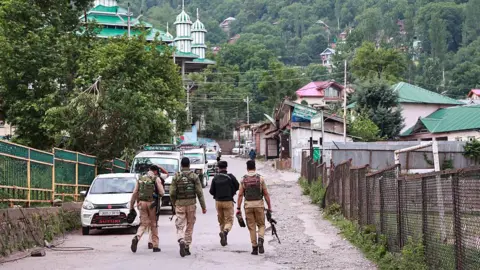Kashmir: Understanding the Roots and Realities of a Contested Region

Kashmir is a breathtaking region located in the Himalayas, renowned for its stunning landscapes and rich cultural history. Yet, for decades, it has also served as the epicenter of deep-seated conflict between India and Pakistan. These disputes have shaped the politics, security, and daily life in South Asia, leaving a profound impact on millions.
The Roots of the Kashmir Conflict
The roots of the Kashmir dispute trace back to the partition of British India in 1947. During this tumultuous period, the princely state of Jammu and Kashmir was caught between India and Pakistan. Both countries laid claim to the territory due to its strategic location and diverse population. Over a million people lost their lives during the partition, and Kashmir quickly became a flashpoint for clashes and wars.
As outlined by NBC News, “the mountainous state of Jammu and Kashmir... soon became a flashpoint. Pakistan backed an insurgency there, leading to the first war with India.” (Read more).
Escalating Tensions and Modern-Day Conflict
Kashmir remains one of the most militarized regions in the world. In recent years, violence has periodically escalated, drawing in political and military leaders from both sides. The latest deadly attack in Indian-administered Kashmir, resulting in civilian casualties, prompted harsh military responses and widespread international concern.
According to the BBC, “This sharp escalation comes after last month's deadly militant attack on tourists in Pahalgam in Indian-administered Kashmir, pushing tensions between the nuclear-armed rivals to dangerous new heights.” (Full analysis here).
Major powers, including the United States, China, Russia, and Turkey, have called for restraint, highlighting the risks of further escalation between two nuclear-armed neighbors. Observers worry that continued violence may spiral out of control unless diplomacy prevails.
Impact on Daily Life in Kashmir
Life in Kashmir is marked by both breathtaking beauty and constant uncertainty. Its valleys and lakes have inspired poets, but local residents face regular disruptions. Military checkpoints, intermittent internet blackouts, and civil drills are parts of daily life. The authorities in Srinagar, Kashmir's largest city, periodically close schools and restrict movement to maintain order during periods of unrest.
“Indian officials at the site of a deadly attack on a group of tourists in Pahalgam,” as reported by NBC News, “underscore the ongoing security threat faced by both locals and visitors.” (See full report).
The Global Stakes and Calls for Peace
The international community has repeatedly called for restraint and dialogue. The situation in Kashmir has implications far beyond the region, affecting global politics, trade, and stability. Leaders continue to urge both countries to prioritize diplomatic solutions over military actions.
President Trump once described the tension in Kashmir as “terrible,” offering to mediate and stressing the urgency of peace. (More on Trump’s statement).
Conclusion
The story of Kashmir is one of beauty shadowed by conflict. Its history reminds us of the urgent need for sustained dialogue and mutual respect. As the world watches closely, the stakes remain high for lasting peace and prosperity in this pivotal region.
For deeper analysis on recent events in Kashmir and expert insights on India-Pakistan relations, explore the detailed coverage from both BBC News and NBC News.